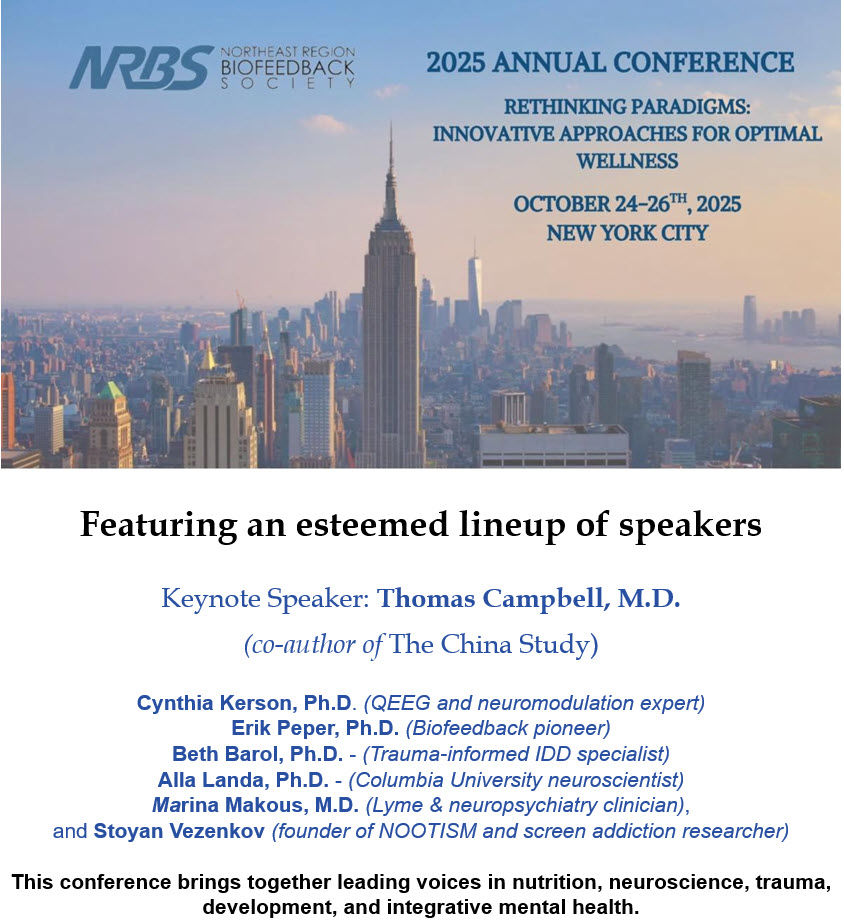The Quigley Report Revised HR and HRV Measurement Standards
- BioSource Faculty
- Apr 29
- 12 min read
Updated: May 15

Motivation for the Report
Quigley et al. (2024) delivered a comprehensive and much-needed revision of the methodological standards guiding research in heart rate (HR) and heart rate variability (HRV) within psychophysiology.
Quigley and colleagues' (2024) report was released during rapidly advancing recording technologies, increasing analytic sophistication, and a growing body of evidence indicating that older interpretive models—particularly those rooted in the 1996 Task Force Report—no longer reflect current scientific understanding. They aimed to improve reproducibility, interpretability, and physiological validity by articulating contemporary best practices across data acquisition, signal processing, and analytic inference. This report is an update and a conceptual realignment rooted in modern autonomic physiology and measurement theory knowledge.
Heart Rate and Heart Period
At the outset, Quigley et al. urged a return to physiological clarity by distinguishing between heart rate (HR), measured in beats per minute, and heart period (HP), defined as the inter-beat interval in milliseconds typically measured from R-wave to R-wave in the ECG signal.
While HR has intuitive appeal and widespread use in lay and clinical settings, HP offers superior analytic properties due to its linear relationship with autonomic inputs. HR is a nonlinear transformation of HP, which distorts statistical relationships, particularly when HR is high and intervals are short. The authors recommended that investigators explicitly justify their choice of HR or HP in relation to the biological model underlying their study and advocate for HP in nearly all inferential contexts.
Resting Heart Period and Reactivity
Quigley et al. introduced a modeling framework for resting HP, incorporating multiple contributors: intrinsic pacemaker rhythm, sympathetic modulation, parasympathetic modulation, their interaction, and residual error. They reminded the reader that neither HR nor HP can be interpreted in isolation as reflecting a specific autonomic source unless multiple branches of autonomic activity are independently assessed.
In experimental paradigms, researchers frequently assume that observed cardiac reactivity—often a change in HR—reflects a reciprocal shift in sympathetic and parasympathetic balance. However, the authors stressed that coactivation, coinhibition, and compensatory responses are common and must be acknowledged in experimental interpretation. Heart period reactivity cannot be assumed to reflect simple autonomic antagonism.
Autonomic Space and Degeneracy
The report advanced the concept of autonomic space, a bidimensional model in which sympathetic and parasympathetic inputs vary independently. Within this framework, a given change in HR or HP may result from many different combinations of autonomic input.
This multiplicity of causal paths—referred to as degeneracy—makes it impossible to determine underlying autonomic states based solely on HRV or even mean HR data. For example, an unchanged heart period may reflect either a stable autonomic input or a compensatory shift in opposing branches.
This insight, long appreciated in theoretical physiology, has only recently become operationalized in HRV analysis. Quigley et al., therefore, emphasized that conclusions about autonomic mechanisms require concurrent measurements such as microneurography, plasma catecholamines, or pharmacologic blockade—not HR or HRV alone.
ECG Signal Acquisition Best Practices
Quigley et al. reaffirmed the central role of the electrocardiogram (ECG) in HR and HRV measurement and argue for elevated technical rigor in signal acquisition. Optimal ECG recording involves proper lead placement, often in a modified Lead II configuration, meticulous skin preparation to reduce impedance, and hardware capable of high-fidelity capture. Critically, the report raised the standard for sampling rate, stating that at least 1000 Hz is required to ensure temporal resolution at the level of single milliseconds. This requirement is grounded in evidence that sub-millisecond timing errors in R-wave detection introduce unacceptable distortions into HRV metrics, especially those used in studies of phase-locked physiological processes such as respiratory gating or stimulus-locked responses.
PPG-Based Measures and Their Limitations
The increasing use of photoplethysmography (PPG) in consumer-grade wearables and ambulatory studies prompted a dedicated discussion. While PPG offers convenience and non-invasiveness, Quigley et al. enumerated its limitations. PPG signals are susceptible to motion artifacts, peripheral vasomotor tone changes, and skin pigmentation variability, compromising beat detection and interval accuracy. Unlike ECG, which directly reflects cardiac electrical activity, PPG captures the mechanical consequences of blood volume changes in distal tissue beds. Although advances in signal processing can partially compensate for these weaknesses, the authors conclude that PPG remains inferior to ECG for precision applications and should only be used when its limitations are acknowledged and methodologically controlled.
Preprocessing and Artifact Management
Signal preprocessing is a critical step in HR and HRV analysis, and Quigley et al. devoted substantial attention to it. They describe best practices for detecting and managing technical artifacts, such as those resulting from electrode pops or signal dropout, and physiological artifacts, such as arrhythmic beats. While automated software tools can flag abnormal interbeat intervals based on deviation thresholds, these tools are not infallible. The authors strongly recommended that trained personnel visually inspect time series data to ensure data quality. They warned that failing to correct even a small number of misidentified beats can produce distorted HRV metrics that are large enough to confound statistical comparisons.
Handling Arrhythmias and Abnormal Sinus Beats
The report also provided specific guidance on managing ectopic beats, particularly atrial premature contractions (APCs) and ventricular premature contractions (VPCs). If such beats reset the sinus node, they create abnormal interbeat intervals that cannot be interpreted as typical autonomic modulation. The recommended solution depends on context: brief arrhythmic segments may be interpolated using local values, while more pervasive disturbances may require excluding affected segments. Importantly, researchers must report their criteria for beat rejection, methods of interpolation, and percentage of excluded data. These steps are essential to protect against bias and preserve transparency in both analysis and publication.
Optimal Epoch Duration for Heart Period Measures
The authors emphasized the importance of epoch selection, or the time window over which HR and HRV are averaged. Shorter epochs (e.g., 30 seconds) can capture transient physiological responses, while longer epochs (e.g., 5 minutes or more) support stable baseline and task condition comparisons. However, longer durations may mask dynamic shifts, while shorter durations may increase measurement error. The choice of epoch must align with the physiological processes of interest. When baseline correction is performed, the baseline measure should match the structure of the target condition to avoid misinterpreting physiological noise as meaningful reactivity.
Physiological Basis of Heart Rate Variability
HRV is generated by extrinsic (autonomic nervous system) and intrinsic (pacemaker cell membrane properties) sources of cardiac modulation. The sinoatrial node receives inputs from sympathetic and parasympathetic fibers, but also exhibits beat-to-beat variability due to stretch activation and membrane ion channel dynamics.
Quigley et al. reiterated that HRV does not represent a resting autonomic “tone,” but rather reflects dynamic modulation—the capacity for the cardiac system to respond moment to moment. High HRV is often interpreted as a marker of healthy autonomic responsiveness, while reduced HRV may reflect pathological rigidity or reduced vagal engagement.
Interpretation Challenges in HRV
A central theme in the report was caution against reifying HRV metrics. While HRV indices such as the RMSSD or HF power are commonly interpreted as markers of vagal activity, these relationships are conditional and often moderated by respiratory rate, baroreflex sensitivity, and context. HRV reflects phasic changes in efferent cardiac control, not the overall amount of parasympathetic or sympathetic influence. Thus, while HRV has proven associations with mood, cognition, and clinical outcomes, these associations must be interpreted as correlational markers rather than causal mechanisms.
The Role of Respiratory Sinus Arrhythmia
Respiratory sinus arrhythmia (RSA) is a specific component of HRV that tracks respiration-linked fluctuations in heart period, predominantly mediated by the vagus nerve. RSA is considered the most interpretable HRV index, especially when respiration is paced or concurrently measured. However, Quigley et al. warned that RSA cannot be used to infer tonic vagal tone unless respiration is explicitly accounted for. Moreover, they explained that RSA amplitude may be shaped by mechanical and reflexive factors beyond neural input, further complicating inferences. This nuanced understanding marks a significant departure from earlier approaches that equated RSA with “vagal tone” unconditionally.
Baroreflex Contributions to Heart Period Dynamics
The report also clarifies the role of the baroreflex, a key short-latency feedback loop that adjusts the heart period in response to blood pressure changes. Oscillations in this system typically occur around 0.1 Hz (approximately one cycle every 10 seconds), contributing to LF power in spectral analyses. While older frameworks interpreted LF as largely sympathetic, Quigley et al. explained that baroreflex-mediated fluctuations are primarily parasympathetic in origin during rest, with some vasomotor contributions. They discouraged using LF power as a direct index of sympathetic activity without accompanying baroreflex sensitivity measurement or pharmacological manipulation.
Methodological Reporting Standards
Transparency in reporting is a recurring theme. Quigley et al. provided an extensive set of methodological reporting guidelines, including the type of equipment used, electrode montage, signal filtering parameters, sampling rate, artifact detection procedures, data exclusion thresholds, and choice of analytic windows. They urged journals to require these details to facilitate reproducibility and encourage readers to scrutinize studies that omit them. In an era of open science and meta-analysis, such rigor is not merely ideal—it is essential.
How Quigley et al. Updated the 1996 Task Force Report
The 1996 Task Force Report was a seminal milestone in establishing standardized methods for heart rate variability (HRV) measurement, physiological interpretation, and clinical use. However, Quigley et al. (2024) identified several ways scientific progress and technological advancements necessitate critical updates to those earlier standards.
First, while the 1996 Task Force recognized that HRV reflects autonomic modulation of cardiac function, it often leaned toward simplifying autonomic interpretations. It emphasized, for instance, the association of high-frequency (HF) power with parasympathetic activity and low-frequency (LF) power partly with sympathetic modulation.
In contrast, Quigley et al. cautioned against these oversimplifications, emphasizing autonomic space and degeneracy. They explain that the same HR or HRV outcome can emerge from multiple autonomic pathways, requiring independent measures of sympathetic and parasympathetic activity rather than relying on HRV components alone for inferences.
Second, Quigley et al. significantly raised the technical standards for ECG acquisition. The 1996 Task Force recommended sampling rates of 250–500 Hz as generally sufficient, with the possibility of interpolation if lower rates were used. Quigley et al. (2024) now require a minimum of 1000 Hz without interpolation for experimental research, citing the need for millisecond precision in R-wave detection to support contemporary time-locked analyses of heart period dynamics.
Third, artifact management has evolved. While the 1996 Task Force recommended careful manual editing and discouraged reliance on automated filters, Quigley et al. integrated current technological capabilities, advocating for combined automated and visual inspection processes. They emphasized that automated artifact correction alone remains insufficient, especially given the increased sensitivity of modern HRV analyses to misidentified beats.
Fourth, the new report differentiates more clearly between heart rate (HR) and heart period (HP). While the 1996 report used HRV to refer to heart rate and heart period variability, Quigley et al. argued that HP, with its linear relation to autonomic input, is preferable to HR for inferential work. They recommended that investigators explicitly justify their choice between HR and HP.
Fifth, regarding photoplethysmography (PPG), the 1996 Task Force focused almost exclusively on ECG. Quigley et al. recognized the growing prevalence of PPG-based consumer and research devices. They outlined its potential but clearly delineated its limitations in precision compared to ECG, urging caution when interpreting PPG-derived HRV data.
Sixth, the authors reframed respiratory sinus arrhythmia (RSA). While the 1996 report introduced RSA primarily as a high-frequency phenomenon indicative of vagal tone, Quigley et al. stressed that RSA reflects phasic, not tonic, vagal modulation. This distinction is crucial, as RSA cannot reliably index resting parasympathetic tone without simultaneous respiration monitoring and modeling.
Seventh, the handling of frequency domain analyses has shifted. The 1996 report proposed normalized units (nu) to interpret LF and HF power. However, Quigley et al. challenged the reliability of normalization, emphasizing that normalized spectral components can obscure absolute reductions in HRV and that interpretation of LF as sympathetic dominance is no longer tenable without independent autonomic validation.
Finally, the philosophy of reporting standards has evolved. While the 1996 Task Force encouraged detailed methods sections, Quigley et al. formalized this expectation into specific, checklist-style reporting requirements. These include explicit details about participant factors, electrode configuration, sampling rate, artifact correction methods, epoch durations, and analytic pipelines, all deemed essential for reproducibility and meta-analytic integration.
Overall, Quigley et al. did not replace the foundational work of the 1996 Task Force but rather extended and refined it in light of expanded physiological understanding, improved technology, and the increasing complexity of psychophysiological research questions.

Conclusion: Toward Better HR and HRV Science
The report by Quigley et al. (2024) signals a maturation of the HR and HRV research community. Where earlier frameworks laid the groundwork for understanding heart–brain interactions, this new standard refines and clarifies that foundation through physiological insight and empirical caution. The recommendations presented are technical and conceptual, encompassing data acquisition, statistical validity, biological interpretation, and reporting transparency. By adopting these guidelines, the field of psychophysiology is better equipped to produce data that are accurate, replicable, and physiologically meaningful.
Key Takeaways
Heart period (HP) is preferred over heart rate (HR) in analyses due to its linear relation with autonomic inputs.
Autonomic activity must be independently measured to interpret changes in HR or HRV properly.
High sampling rates (≥1000 Hz) and careful artifact management are essential for ECG accuracy.
Photoplethysmography (PPG), although convenient, introduces greater error than ECG, especially during movement.
Transparent methodological reporting is vital for advancing psychophysiological HR and HRV research.
Glossary
autonomic space: a conceptual two-dimensional model representing independent sympathetic and parasympathetic influences on heart period.
baroreflex: a physiological mechanism that maintains stable blood pressure by adjusting heart rate and vascular tone in response to pressure changes.
bidimensional model: a two-axis representation of autonomic influence, such as the autonomic space framework, in which sympathetic and parasympathetic inputs are plotted independently to capture a wider range of autonomic patterns beyond reciprocal control.
coactivation: a pattern in which both sympathetic and parasympathetic branches are simultaneously active, leading to complex effects on heart period not captured by simple HR changes or HRV metrics alone.
coinhibition: a condition in which both sympathetic and parasympathetic activities are simultaneously suppressed, often resulting in reduced variability without a clear change in average heart rate.
compensatory responses: adjustments in one autonomic branch that counteract changes in the other, such as increased vagal tone buffering sympathetic activation, making net HR or HRV changes difficult to interpret without direct measurement of both branches.
degeneracy: the phenomenon where different biological mechanisms or patterns lead to the same functional outcome, such as identical heart period changes arising from different autonomic profiles.
dynamic modulation: moment-to-moment changes in cardiac autonomic input, particularly vagal, that generate phasic variability in heart period; contrasted with tonic influences which affect baseline autonomic tone.
ectopic beats: abnormal heartbeats originating outside the sinoatrial node, including APCs and VPCs, that disrupt the regularity of heart period intervals and must be identified and corrected or excluded to preserve HRV validity.
electrocardiogram (ECG): a recording of the heart's electrical activity captured through electrodes placed on the body.
epoch selection: the process of defining the duration and timing of data segments used for HR and HRV analysis; critical for matching analytic resolution to the temporal dynamics of the physiological phenomena under study.
extrinsic HRV sources: variability in heart period driven by external regulatory inputs, primarily autonomic nervous system activity, including vagal and sympathetic efferents to the sinoatrial node.
heart period (HP): the time interval between successive R-waves on the ECG, typically measured in milliseconds.
heart rate (HR): the number of heartbeats per minute.
heart rate variability (HRV): the variation in time between successive heartbeats, reflecting dynamic autonomic regulation of cardiac function.
high-frequency (HF) power: the high-frequency component of the HRV spectrum (typically 0.15–0.40 Hz) associated primarily with respiratory sinus arrhythmia and parasympathetic (vagal) modulation of the heart during spontaneous or paced breathing.
intrinsic HRV sources: beat-to-beat variability arising from properties of pacemaker cells themselves, such as ion channel kinetics and stretch sensitivity, independent of autonomic modulation.
photoplethysmography (PPG): a non-invasive optical technique that measures blood volume changes in the microvascular bed of tissue, often used to estimate HR and HRV.
physiological artifacts: irregularities in the heart period time series that arise from biological but non-sinus mechanisms, such as ectopic beats (e.g., atrial or ventricular premature contractions), sinus arrhythmias unrelated to autonomic modulation, or sustained arrhythmias. These events produce non-representative intervals that do not reflect typical autonomic regulation and require removal, interpolation, or exclusion from analysis to preserve the interpretability of HRV metrics.
premature contractions (APCs): atrial premature contractions are early heartbeats originating in the atria that can reset the sinoatrial node and create non-physiological intervals in HRV time series, requiring correction or exclusion in preprocessing.
respiratory sinus arrhythmia (RSA): the natural variation in heart period that occurs during the breathing cycle, mediated primarily by the parasympathetic nervous system.
RMSSD: the root mean square of successive differences between adjacent heart period intervals; a time-domain HRV measure strongly associated with parasympathetic (vagal) modulation and minimally influenced by respiratory rate under resting conditions.
sampling rate: the frequency at which an analog physiological signal is digitally recorded, typically expressed in Hertz (Hz), influencing temporal resolution and accuracy.
Task Force Report: The 1996 Task Force Report refers to the joint publication by the European Society of Cardiology and the North American Society of Pacing and Electrophysiology titled "Heart Rate Variability: Standards of Measurement, Physiological Interpretation, and Clinical Use." It was the first authoritative consensus document to standardize terminology, measurement procedures, and interpretive frameworks for heart rate variability (HRV) research and clinical application.
technical artifacts: distortions or inaccuracies in heart period recordings caused by non-biological factors, such as poor electrode contact, motion-induced signal dropout, electromagnetic interference, or hardware malfunctions. These artifacts typically result in missed or misidentified R-waves, leading to erroneous interbeat intervals that must be detected and corrected to ensure valid HRV analysis.
ventricular premature contractions (VPCs): ectopic beats originating in the ventricles, often with wide QRS complexes and compensatory pauses, that significantly distort HRV metrics if not removed or interpolated appropriately.
References
Berntson, G. G., Bigger, J. T., Eckberg, D. L., Grossman, P., Kaufmann, P. G., Malik, M., Nagaraja, H. N., Porges, S. W., Saul, J. P., Stone, P. H., & van der Molen, M. W. (1997). Heart rate variability: Origins, methods, and interpretive caveats. Psychophysiology, 34(6), 623–648. https://doi.org/10.1111/j.1469-8986.1997.tb02140.x
Jennings, J. R., Berg, W. K., Hutcheson, J. S., Obrist, P., Porges, S., & Turpin, G. (1981). Committee report. Publication guidelines for heart rate studies in man. Psychophysiology, 18(3), 226–231. https://doi.org/10.1111/j.1469-8986.1981.tb03023.x
Quigley, K. S., Allen, J. J. B., Jennings, J. R., Berntson, G. G., Norman, G. J., & Thayer, J. F. (2024). Recommendations for cardiac psychophysiology research: Heart rate and heart period variability. Psychophysiology, 61(1), e14396. https://doi.org/10.1111/psyp.14604
Task Force of the European Society of Cardiology and the North American Society of Pacing and Electrophysiology. (1996). Heart rate variability: Standards of measurement, physiological interpretation, and clinical use. Circulation, 93(5), 1043–1065. https://doi.org/10.1161/01.CIR.93.5.1043
Support Our Friends











Comments